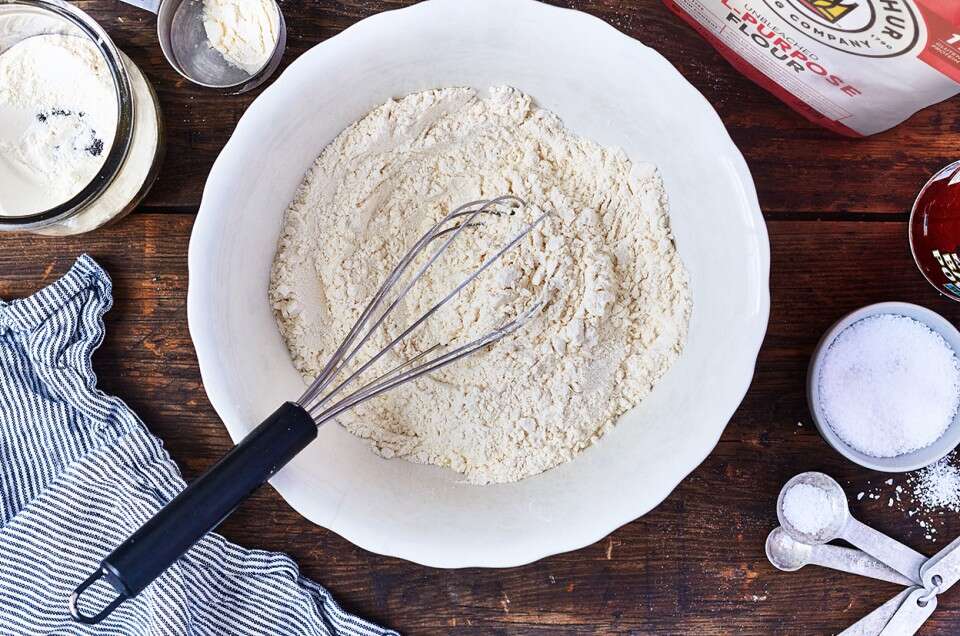A Comprehensive Guide for Parents: Exploring the Use of Self-Raising Flour, Plain Flour, and Baking Powder
Hello there, dedicated parents! Are your children bubbling with excitement to help out in the kitchen? It’s time to roll up those sleeves, and let’s dive in together into the world of home baking. In this wholesome guide, we’ll be shining a spotlight on an essential trio in the baking realm: self-raising flour, plain flour, and baking powder.
Section 1: All About Flour
Introduction to Plain Flour
Plain flour, also known as all-purpose flour, is like the reliable friend we’ve all got – always there when you need it most. Plain flour is versatile, meaning it can be used just about every baking recipe you come across: pizza dough, cookies, bread, and more. It’s made from a mixture of hard and soft wheat and is often enriched with iron and B vitamins for added nutritional value.
When to Take the Self-Raising Flour Route
Parent-hood often means wearing many hats, and one of those is undoubtedly the “Innovation Specialist.” Self-raising flour is great for those moments when quick and easy is the order of the day. Pre-mixed with baking powder, self-raising flour saves you time and effort. It’s a go-to for recipes like pancakes, muffins, scones, and even some cakes.
Section 2: The Magic Ingredient, Baking Powder
Let’s Talk Baking Powder
Have your children ever asked the question, “But how does it rise?” It’s time to unravel the mystery of what makes our favorite baked goods soft and fluffy. Meet baking powder, the magic leavening agent that makes our cakes, biscuits, and pancakes rise with joy, creating a delightful, fluffy texture.
Create Your Own Self-Raising Flour
With a dollop of creativity, it’s simple to create your own self-raising flour using plain flour and baking powder. It’s also a handy trick when you run out of self-raising flour mid-recipe. Simply add two teaspoons of baking powder for each 150g/1cup of plain flour, and voila! You’ve got yourself homemade self-raising flour.
And that’s our journey for now. To continue this adventure, let’s take a look at the specific benefits of each ingredient, how they interact with each other, and some pro tips for making your baked goods the talk of the family.
Happy baking, fabulous parents!

Section 3: Benefits and Interactions of Ingredients
The Nutritional Perks of Flour
Both self-raising and plain flours are rich in carbohydrates, providing us with a good source of energy. Moreover, because they often come enriched with iron and vitamins, they contribute to a balanced diet, especially for growing children who need these nutrients for their development.
How Baking Powder Interacts with Flour
The right combination of flour and baking powder can create a baking marvel. Baking powder, when mixed with moisture and heat, produces gas bubbles that create a ‘rise’ in the dough or batter. This interaction is crucial in baked goods as it provides them their light and tender crumb.
Section 4: Pro Tips for Baking with Flours and Baking Powder
Sift, Sift, and Sift
Before jumping into your next baking project, remember to sift your flours and baking powder together. This important step ensures a well-mixed and lump-free batter which will help yield an evenly raised and smooth-textured baked good.
Monitor the Shelf Life
Just like us, baking ingredients also have their prime time. Therefore, keep a check on the expiry date of your flour and baking powder. A fresh stock ensures optimum performance and taste of your baked concoctions.
Storage is Key
Proper storage elongates the life of these baking staples. Store in a cool, dry place and try to use airtight containers. The enemies of baking supplies are high temperature, moisture, and air exposure.
Conclusion: Embrace the Joy of Baking
Isn’t it wonderful how these humbly packaged powders can transform into beautifully risen and delicious treats? Understanding these ingredients and their functions has the potential to cook up a storm of joy in your family kitchen! Remember, the heart of baking is experimentation. So, don’t be afraid to involve your little sous chefs and create some extraordinary bake-tastic memories together. Let this guide be a stepping stone on your merry baking journey. Happy baking, fabulous parents – let’s create some magic!
5 Essential Things Parents Should Know About Preparing for Self Raising Flour, Plain Flour, Baking Powder Baking
1. Understand the Difference
First and foremost, it’s important to know the difference between self raising flour, plain flour, and baking powder. Self-raising flour already has baking powder mixed in, whereas plain flour requires the addition of a raising agent like baking powder.
2. Keep Proportions in Mind
When you’re converting plain flour to self-raising for a recipe, use the rule of thumb – for every 150g of plain flour, 2 teaspoons of baking powder is needed.
3. Store Correctly
Ensure to store these ingredients in a cool and dry cupboard or section of your kitchen. Especially baking powder can lose its effectiveness once exposed to air or moisture.
4. Check Expiry Dates
Flours and baking powder can expire and lose their rising capabilities. So, always keep an eye on the expiry dates.
5. Baking with Kids Can Be Messy
Baking with children might be a little messy, so be prepared for it. But the fun and learning while preparing the batter or dough would outweigh the little cleanup after.
Remember, preparation is key to execute any baking recipe perfectly, especially when it comes to baking with self raising flour, plain flour, and baking powder.
For more great articles please see here. For more information see here
Disclaimer
The articles available via our website provide general information only and we strongly urge readers to exercise caution and conduct their own thorough research and fact-checking. The information presented should not be taken as absolute truth, and, to the maximum extent permitted by law, we will not be held liable for any inaccuracies or errors in the content. It is essential for individuals to independently verify and validate the information before making any decisions or taking any actions based on the articles.




